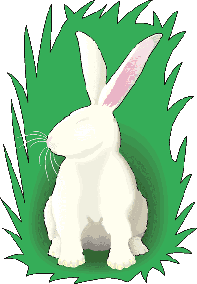
All about Easter
Easter is the most important religious celebration in the
Christian liturgical year. Christians believe that Jesus was
resurrected three days after the crucifixion and they calebrate
this event on Easter Sunday, two days after Good Friday.
The chronology of his death and resurrection is estimated to
have occurred between the years 26 and 36 A.D. Easter is also
known as Eastertide and traditionally lasted for the fourty days
from Easter Day until ascension Day – but now officially lasts
for the 50 days until Pentecost. It is a movable event and not
fixed in relation to the civil calendar and can fall at some
point between late March and late April, following the cycle of
the Moon. After several centuries of disagreement all churches
accepted the computation of the Alexandrian – now the Coptic –
church that Easter falls on the first Sunday after the Paschal
Full Moon, which is the first moon whose 14th day
(the ecclesiastic "full moon") is on or after March 21st
– the ecclesiastic "vernal equinox"- where night and day are of
roughly equal length.
Easter is linked to the Jewish ‘Passover’ not for its symbolism
but also for its position in the calendar – as is Spring Break,
a secular school holiday (usually a week long) celebrated at
various times across North America and characterized by road
trips and bachanalia. Cultural elements, such as the Easter
Bunny, have become part of the holiday’s modern celebrations,
and those aspects are often celebrated by many Christians and
non-Christians alike.
The modern English term "Easter" developed from the Old English
word Eastre or Eostre, which itself developed prior to 899. The
name refers to Eostur-monath, a month of the Germanic calendar
as named after the goddess Eostre of Anglo-Saxon paganism.
In 1835, Jacob Gromm proposed an equivalent Old High German
name, ‘Ostara’, in his work Deutsche Mythologie. An amount of
scholarly theory and speculation surrounds the figure. But
modern German now has ‘Ostern’.
Perhaps the earliest extant primary source referencing Easter is
a mid-2nd century Paschal homily, which characterizes
the celebration as a well-established one. Evidence for another
kind of Christian festival, the commemoration of martyrs, begins
to appear at about the same time as evidence for the celebration
of Easter. But while martyrs’ "birthdays" were celebrated on
fixed dates in the local solar calendar, the date of Easter was
fixed by means of the local Jewish lunisolar calendar.
In Western Christianity, Easter marks the the end of lent – a
period of fasting and penitence in preparation for Easter, which
begins on Ash Wednesday and lasts fourty days (not counting
Sundays). The week before Easter, known as Holy Week, is very
special in the Christian tradition. The Sunday befor Easter is
Palm Sunday and the last three days before Easter are ‘Maundy
Thursday’ or Holy Thursday, Good Friday and Holy Saturday – also
referred to as ‘Silent Saturday’ – these days respectively
commemorate Jesus’ entry into Jerusalem, the Last Supper and the
Crucifixion and are sometimes referred to as the Easter Triduum
(Latin for "Tree Days").
At Easter, popular customs reflect many ancient pagan survivals
– in this instance, connected with spring fertility rites, such
as the symbol of the Easter egg and the Easter hare or rabbit.
In the ancient world people were far more connected to the land
and cycles of nature than we are today. They depended on the
land’s fertility and crops to survive. Spring, when fertility
returned to the land after the long desolation of winter, was a
much-anticipated and welcome time for them.
Many peoples celebrated the coming of Spring with celebrations
and worship of their gods and goddesses, especially those
associated with fertility. Among such deities were Baal and
Astarte or Ashtoreth, mentioned and condemned frequently in the
bible, whose worship typically included ritual sex to promote
fertility throughout the land. It was only naturally to the
peoples of the ancient Middle East to incorporate symbols of
fertility – such as eggs and rabbits, wich reproduce in great
numbers – into those pagan celebrations for their gods. Easter
eggs and the Easter rabbit are simply a continuation of these
ancient spring fertility rites.
 Well, this is no longer the overriding reason that we celebrate
this annual event. Let everyone chose their reason and way to
celebrate Easter. I keep with Goethe and his conclusion of his
well-known poem ‘Osterspaziergang’: "Hier bin ich Mensch, hier
darf ich’s sein!" Well, this is no longer the overriding reason that we celebrate
this annual event. Let everyone chose their reason and way to
celebrate Easter. I keep with Goethe and his conclusion of his
well-known poem ‘Osterspaziergang’: "Hier bin ich Mensch, hier
darf ich’s sein!"
Frohe Ostern!
Happy Easter!
Dick Altermann
|
|



 Well, this is no longer the overriding reason that we celebrate
this annual event. Let everyone chose their reason and way to
celebrate Easter. I keep with Goethe and his conclusion of his
well-known poem ‘Osterspaziergang’: "Hier bin ich Mensch, hier
darf ich’s sein!"
Well, this is no longer the overriding reason that we celebrate
this annual event. Let everyone chose their reason and way to
celebrate Easter. I keep with Goethe and his conclusion of his
well-known poem ‘Osterspaziergang’: "Hier bin ich Mensch, hier
darf ich’s sein!"